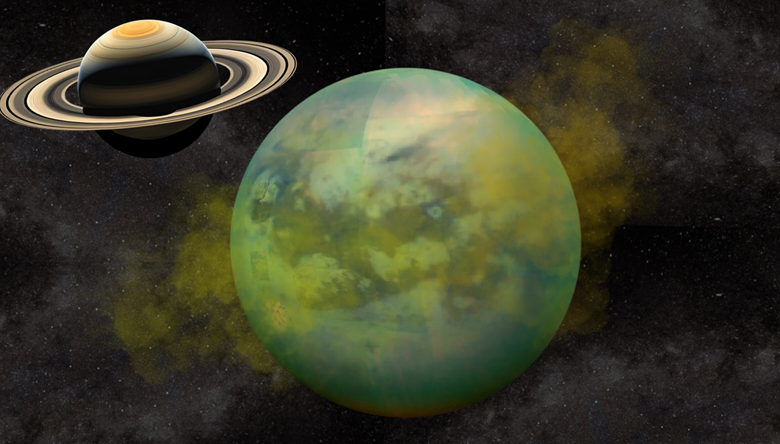Is There Life on Titan, Saturn’s Moon? A New Study Gives a Big Hint

News Mania Desk / Piyal Chatterjee / 4th November 2024
According to a recent study, Titan, Saturn’s largest moon, may have a unique crust that is 9.7 kilometers thick, which could contain methane gas. Titan’s impact craters were hundreds of meters shallower than anticipated, and just 90 of them had been detected, according to the research team headed by planetary scientists from the University of Hawaii. The findings were unexpected because Titan’s surface should have had more impact craters that are significantly deeper, according to data from other moons.
“We realised something unique to Titan must be making them become shallower and disappear relatively quickly,” said lead researcher Lauren Schurmeier, adding that the scientists turned to computer modelling to further the investigation.
“Using this modeling approach, we were able to constrain the methane clathrate crust thickness to five to ten kilometres [about 3 to 6 miles] because simulations using that thickness produced crater depths that best matched the observed craters,” she added.
Methane clathrate, often known as “methane hydrate,” is a solid substance that resembles ice because a significant proportion of methane is trapped inside the crystalline structure of water. Researchers believe that learning more about methane clathrate will help them comprehend Titan’s carbon cycle and climate change.The methane-rich crust’s thickness may also indicate that Titan’s interior was insulated, which would have made the ice shell extremely heated and ductile and suggested that it was slowly joining. Convection suggested that life-indicating biomarkers might have been lifted from Titan’s subterranean water and transported to its outer frozen shell, where they are now waiting to be found.
“If life exists in Titan’s ocean under the thick ice shell, any signs of life, biomarkers, would need to be transported up Titan’s ice shell to where we could more easily access or view them with future missions,” Ms. Schurmeier added.
Notably, Earth’s methane clathrate hydrates are found in the permafrost of Siberia and below the arctic seafloor.
One of the most livable worlds in our solar system is Titan, the moon of the second-largest planet. Other than Earth, it is the only planet with an atmosphere and surface liquids in the form of lakes, rivers, and seas. Furthermore, a human could move across Titan’s surface without a pressure suit due to the nitrogen atmosphere’s extreme density. However, protection from extremely cold temperatures—which are approximately minus 179 Celsius—would necessitate the use of an oxygen mask.






